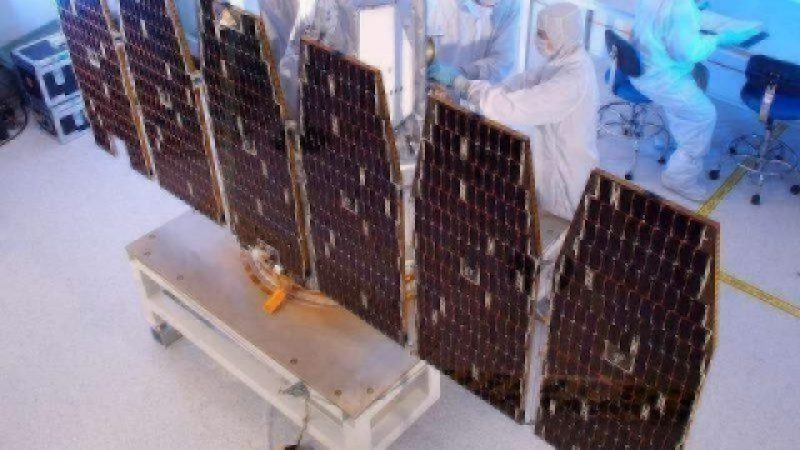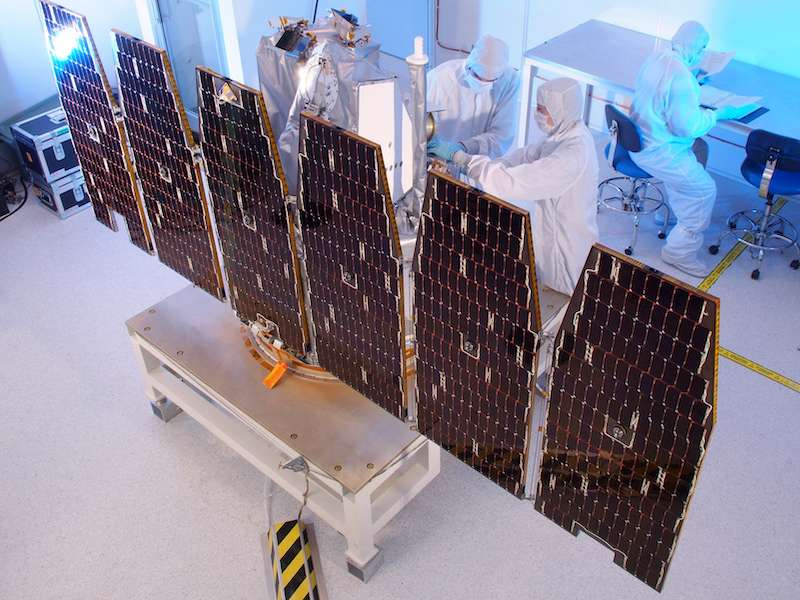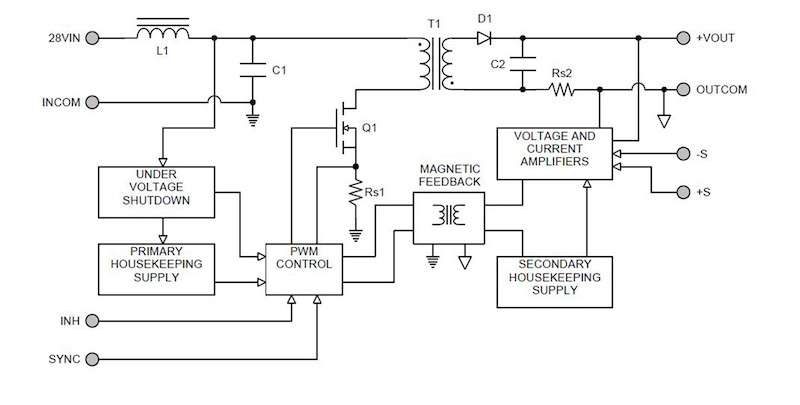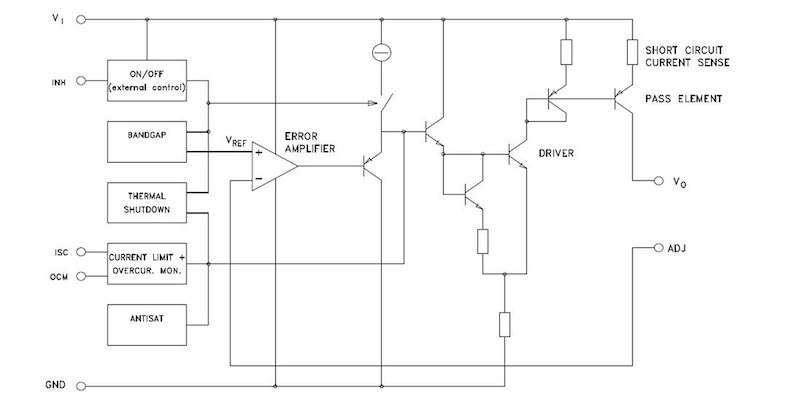The Importance of Power Systems for Space Missions
Article By : Maurizio Di Paolo Emilio

Electrical power systems require the optimal combination of primary and secondary sources
A satellite needs an energy source to provide perfect performance, with the battery inside it working continuously for many years. The electrical power system is, perhaps, the most fundamental requirement for the satellite payload, as power system failure results in the loss of the space mission. It’s interesting to note that many of the early satellite systems failed due to these power system failures.
Power systems cover all aspects of energy production, storage, conditioning, distribution, and conversion for all types of space applications. Missions can last from a few minutes (launchers) to decades, such as interplanetary probes or the International Space Station (ISS), and can require from a minimum of a few watts (cubes) to tens of kilowatts (large space vehicles for telecommunications such as for the ISS). The electrical loads of a satellite often vary depending on which instruments or subsystems are running at a given time.
Therefore, power systems engineering (also called the electrical power system, or EPS) for satellites requires the selection of the optimal combination of primary and secondary sources for the architecture.
Power sources
Power systems mainly consist of electrochemical sources — i.e., primary or secondary batteries — or a solar generator supported by a battery when the spacecraft enters an area with low solar coverage. Today, most satellites are based on advanced solar cells with an efficiency of about 30% and lithium-ion (Li-ion) batteries.
When the distance from the sun becomes too high, which is typically beyond Jupiter, the solar flux can no longer be used effectively, and nuclear sources are the only option left. The sun provides about 1.4 kilowatts of power per square meter in Earth’s orbit, a free resource that spacecraft designers do their best to take advantage of.
Today’s triple-junction solar cells used in these applications will be replaced by more efficient four- to six-junction solar cells in the coming years. New battery technologies, such as lithium-sulfur, are currently under intense efforts to provide a new step forward in energy density (Fig. 1).

Fig. 1: Solar cell on a satellite. (Image: NASA)
In a typical satellite-based power system, the primary system, in particular, is responsible for generating the main power bus. The most popular solutions include the use of solar panels, fuel cells, or in the case of short missions — such as launchers used to take satellites and probes into orbit — Li-ion batteries. On the other hand, in long-term missions and in conditions of low solar radiation intensity, systems for the electrical generation using the Seebeck effect have been adopted, which make use of the slow decay of radioactive materials.
The secondary power system is used to supply the power to the satellite when the primary system is not able to function or fully satisfy the energy demand required by the operating scenario. In the case of satellites with solar panels, for example, this happens during periods of an eclipse when the panels are not directly exposed to the sun or the inclination of the satellite reduces the incident radiation flow to the panel itself. The most common solution is undoubtedly the use of Li-ion batteries. In the case of equipment that requires high power, typically over 100 kW, regenerable fuel cells have also been used.
In the field of power electronics, the tendency is to reduce the size of the equipment while increasing the efficiency at the same time. Also, in this case, advanced components such as gallium nitride (GaN)- or silicon carbide (SiC)-based semiconductors are the subject of essential development efforts to achieve both objectives.
One of the most essential tasks of energy conditioning is, therefore, to optimally control the power exchanges between the solar generator, the battery, and the loads. This means ensuring that the power delivered to the loads remains within the voltage range that they can accept, sizing the solar array so that the battery can be recharged while the spacecraft equipment is powered.
Because the power system is the only resource for the spacecraft, it must be protected from failures that could degrade it or even put it out of service, especially in short-circuit situations.
Taking into consideration the satellites that use solar panels, the periods in which the primary source is not able to produce electricity (such as during eclipses) strongly depend on the type of orbit. Typically, the low Earth orbit (LEO) eclipses only last 35 minutes for each low-inclination orbit, while in the geostationary Earth orbit (GEO), eclipses occur only in the two equinox periods, with a maximum duration of 1.2 hours in 24 hours.
The main parameters that need to be considered for choosing the type of battery are useful life (in years), specific weight (kWh/kg), and volume (kWh/m3). Usually, the parameters that most influence the choice of battery type for satellites are the specific weight or the quantity of energy that can be stored according to its weight.
One of the critical aspects of batteries for space operation is the reliability and efficiency of the charge. The fundamental parameters, in this sense, are the battery charge/discharge speed, its depth of discharge, the amount of battery overcharge, and thermal sensitivity.
Power management
The power supplied by the primary or secondary systems in a satellite must be conditioned and distributed to the various electronic devices on board.
The array of solar panels constitutes the primary energy source. In regulated applications, the output voltage of the panels is regulated by pulse-modulation techniques (pulse-width modulation) or by S3R circuits (sequential shunt switching regulators). Depending on the current energy requirements and the mission profile, some segments of the panel matrix can be disabled through a “shunt dump” circuit; the term “solar power assembly,” or SPA, typically refers to the primary unit.
The “shunt dump” circuit is controlled by the feedback derived from the sensing of the output voltage or tracking of the maximum power point of the cells. In this case, the working point of the cells is changed by varying the operating voltage.
The power and distribution management subsystem operate with a primary bus voltage set to the peak power of the solar arrays. This value can change over time as the arrays are degraded by ionizing radiation.
The battery charge/discharge units, or BCDUs, regulate the amount of charge inserted into the battery and can supply up to 6.6 kW at the Space Station. During insolation, check the amount of battery overload. Every day, they undergo 16 charge/discharge cycles. The ISS, for example, has about 24 BCDUs, each weighing 100 kg.
The power control and distribution unit, or PCDU, is the unit for monitoring and protecting the primary and secondary power lines. Typically, it has a telemetry interface and remote controls to the onboard computer to control power management procedures.
Integrated filters, DC/DC converters, and qualified and radiation-resistant linear regulators are available to derive these working voltages from the primary line. An example is VPT’s two series of DC/DC standard converters and accessories designed, tested, and proven for the challenging environment of space.
VPT’s SVR series of DC/DC converters delivers a qualified power solution for LEO, MEO, GEO, deep space, and launch programs. These devices are rad-hard–qualified to MIL-PRF-38534 Class K and are designed in accordance with Aerospace Corporation’s Technical Operating Report (TOR) requirements (Fig. 2).

Fig. 2: Block diagram of the SVR series. (Image: VPT)
Another example is Microsemi’s radiation-hardened regulators, which include hybrid switching regulators with integrated FETs and inductors, as well as both LDO and non-LDO linear voltage regulators. The SA50-120 family is suited for use on the ISS, supporting 120 Vin. The single output version of the SA50-120 family can be used in parallel to provide additional power.
STMicroelectronics proposes a broad portfolio of products specifically designed, packaged, tested, and qualified so that they comply with the standards for aerospace defined by the qualifying agencies. One example is the RHFL4913A, which is tested by MIL-STD-883E Method 1019.6 and in enhanced low dose rate sensitivity (ELDRS) conditions (Fig. 3).

Fig. 3: Block diagram of the RHFL4913A. (Image: STMicroelectronics)
Space radiation
The rad-hard design determines the design requirements of an electronic component to resist the effects of radiation. It may be one of the most expensive and time-consuming approaches, but sometimes, it is the only solution for electronic components, and it is essential to protect human lives or safeguard important orbital missions in deep space.
The problem is radiation; space has a lot of it, and most modern electronic components are not designed to work in an environment with a specific level of cosmic radiation. The intensity levels that occur in space can cause a variety of problems to electronic components, ranging from a simple operating fault to a complete blackout.
Within large spatial structures such as the ISS, the flow of cosmic rays, consisting primarily of 85% protons and 15% heavy nuclei, is partially converted into secondary neutrons following various collisions with the material of the structure.
In addition to permanently damaging CMOS integrated circuits, radiation can cause single-event effects (SEEs): single-event upsets (SEUs), single-event functional interrupts (SEFIs), and single-event transients (SETs). The digital microcircuits are interesting in this context, as the trapped charge can shift the threshold voltage of the MOS transistor, a key parameter that is directly correlated to the consumption and speed of the circuit.
Conclusion
Power systems undoubtedly represent one of the first devices considered for new satellite programs. The mission strongly impacts the design of the satellite’s electrical power subsystem and, in particular, the battery. This requires careful consideration of all design parameters from payloads and subsystems to orbital factors and the effects of radiation on electronic components to develop the right combination of primary and secondary sources for the mission.